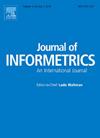在灰烬中挖掘黄金:在大量无利可图的专利中识别睡美人
IF 3.5
2区 管理学
Q2 COMPUTER SCIENCE, INTERDISCIPLINARY APPLICATIONS
引用次数: 0
摘要
本文提出了一个具有多模态特征的创新深度学习框架,以确定当前无利可图的专利是否在早期阶段是睡美人。专利特征包括文本内容和网络化的背景信息,如发明人和受让人,以及他们以前创造的作品。该框架使用Transformer将专利与有关技术发展趋势的新闻或分析报告进行比较,从语义和语法两方面挖掘其内容。一个主动图形卷积网络,挖掘专利的创新协作网络,也被用作框架的一部分,以揭示专利、公司和发明者之间的关系。该框架最后利用得到的特征构建了一个多头自注意模型,以预测专利成为睡美人的概率。本文通过使用来自美国专利商标局(USPTO)的真实案例,将所提出的模型与几种众所周知的基线方法进行比较,来检验所提出的模型。根据所有性能指标,所提出的深度学习解决方案优于所有基线方法。其长期预测精度大大超过竞争对手。在烧蚀实验中,从文本和网络中提取特征可以提高预测模型的性能。本文章由计算机程序翻译,如有差异,请以英文原文为准。
Uncovering gold in ash: identifying sleeping beauties among massive unprofitable patents
This paper proposes an innovative deep-learning framework with multi-modal features to determine whether a currently unprofitable patent is a sleeping beauty at an early stage. Patent features include the textual content as well as the networked background information, such as the inventors and assignees, as well as the previous works they have created. The framework uses a Transformer to compare the patent with news or analytical reports concerning technological development trends, mining its content both semantically and syntactically. An active graphical convolutional network, mining the innovation collaboration network of a patent, is also employed as part of the framework to reveal the relationship between patents, companies, and inventors. This framework finally utilizes the obtained features to construct a multi-head self-attention model to predict a patent with the probability of being a sleeping beauty. This paper examines the proposed model by comparing it to several well-known baseline methods using real-world cases from the United States Patent and Trademark Office (USPTO). The proposed deep learning solution outperforms all baseline methods according to all performance metrics. Its long-term forecasting accuracy significantly exceeds its rivals. In the ablation experiments, features extracted from texts and networks are shown to improve the performance of prediction models.
求助全文
通过发布文献求助,成功后即可免费获取论文全文。
去求助
来源期刊

Journal of Informetrics
Social Sciences-Library and Information Sciences
CiteScore
6.40
自引率
16.20%
发文量
95
期刊介绍:
Journal of Informetrics (JOI) publishes rigorous high-quality research on quantitative aspects of information science. The main focus of the journal is on topics in bibliometrics, scientometrics, webometrics, patentometrics, altmetrics and research evaluation. Contributions studying informetric problems using methods from other quantitative fields, such as mathematics, statistics, computer science, economics and econometrics, and network science, are especially encouraged. JOI publishes both theoretical and empirical work. In general, case studies, for instance a bibliometric analysis focusing on a specific research field or a specific country, are not considered suitable for publication in JOI, unless they contain innovative methodological elements.
 求助内容:
求助内容: 应助结果提醒方式:
应助结果提醒方式:


